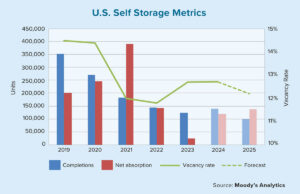The mortgage industry played a pivotal role in steadying the U.S. economy after the COVID-19 pandemic struck in 2020. The Federal Housing Finance Agency (FHFA) was central in creating a mortgage forbearance plan for affected homeowners.
Mark Calabria, who served as the FHFA director during this unprecedent time, said that his team took a hard look at how mortgage servicing would handle a stressed environment prior to the pandemic. When the FHFA forecast that 6% of Fannie Mae’s and Freddie Mac’s borrowers would request forbearance, Calabria felt the agency “wasn’t flying in the dark.” The forecast proved accurate.
Calabria has written a book on his experience, due out early next year, called “Shelter from the Storm: How a COVID Mortgage Meltdown Was Averted.” Calabria recently spoke to Scotsman Guide about his tenure at FHFA, which was cut short after a change in administrations, as well as the conservatorship status of Fannie and Freddie and the oncoming challenges for the mortgage market.
What is the one accomplishment that you are most proud about during your tenure at FHFA?
It’s not the thing I set out to do, but our COVID response is probably the thing I would say I’m most proud of. Fannie, Freddie and the Federal Home Loan Banks really rose to the occasion and demonstrated under what circumstances they can be truly effective.
Yes, we are not building enough housing in this country, but that in no way means that prices can’t come down.
What do you regret about your tenure?
I regret I didn’t get to serve my full term. We had a five-year plan to get Fannie and Freddie fixed so they could exit conservatorship. Obviously, the clock ran out on us.
Why is it important to remove Fannie and Freddie from conservatorship?
It’s even more important today because the agency is no longer independent. You risk having these essentially be off-budget cash cows used for political purposes. You can imagine the temptation for many White Houses saying, ‘We’re down in the polls. How do we gin up the economy? Let’s loosen underwriting standards.’
What are the challenges you see facing the mortgage industry in the near term?
The same forces that led to a record run-up in prices offer the potential for record declines in prices. While the typical borrower is fine, it’s not the 50th percentile borrower you worry about. It’s the fifth percentile. You do have a sliver of borrowers who got in over the last year who have very little equity. Those borrowers are very vulnerable to a shock in the economy.
The core problem with the housing industry appears to be lack of inventory.
We have supply shortages in many markets. People take that to the next step and say, therefore, prices cannot go down. Those two things simply don’t follow. For the record, people said the same thing in, like, 2006. Yes, we are not building enough housing in this country, but that in no way means that prices can’t come down.
Do you think prices will come down?
In real terms, in some markets? Absolutely. Redfin data recently showed that San Francisco prices have already started to fall, so you’re going to see price declines. The housing market goes up, it goes down, and it’s also important to know the price you have on the market is that intersection of supply and demand. We have seen a tremendous amount of demand leave the market.
What do you think of the Biden administration’s plans to address housing supply?
Half of what they proposed requires Congress to do things. The rest of it is directed at the demand side of the market and not the supply side. I don’t take a lot of comfort in looking at the administration and think they have even the first clue about what’s going on in the housing and mortgage market. They’re not going to fix it because they don’t quite seem to understand what the bottom-line problem is.
Has the federal government done enough to grow homeownership for people of color?
The most important homeownership policy you can have is a jobs policy. If you’re not creating jobs and growing income, then you’re not going to have strong homeownership growth. There’s nothing you can do on the credit side that’ll overcome that. ●






